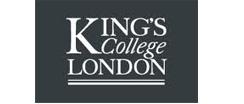- View more resources from this publisher
 King's College London
King's College London
Beyond 2000: Science Education for the Future
The Beyond 2000 report was the outcome of a seminar series initiated by Rosalind Driver and Jonathan Osborne at King’s College London. The series was funded by a grant from the Nuffield Foundation. There were four closed seminars and two open seminars. The report was edited by Robin Millar and Jonathan Osborne and published in 1998. The report addresses four key questions: * What are the successes and failures of science education to date? * What science education is needed by young people today? * What might be the content and structure of a suitable model for a science curriculum for all young people? * What problems and issues would be raised by the implementation of such a curriculum, and how might these be addressed? The report argues that the compulsory science curriculum should be designed to develop the scientific literacy of future citizens. It also recommends a separate, parallel course to prepare young people who opt for more advanced study in science.
Contents 1 Background and context 2 Science education: what we have achieved 3 Science education: the remaining problems 4 The role of science in the curriculum *4.1 Why does an education in science matter? *4.2 Who is the school science education for? *4.3 Curriculum choice 5 Designing a new science curriculum *5.1 Science curriculum: aims *5.2 Presenting the curriculum *5.3 Integrating various aspects of the curriculum *5.4 Teaching approaches 6 Assessment 7 Towards change *7.1 Changes required in the short term *7.2 Towards a framework for innovation and development of the science curriculum
Show health and safety information
Please be aware that resources have been published on the website in the form that they were originally supplied. This means that procedures reflect general practice and standards applicable at the time resources were produced and cannot be assumed to be acceptable today. Website users are fully responsible for ensuring that any activity, including practical work, which they carry out is in accordance with current regulations related to health and safety and that an appropriate risk assessment has been carried out.




